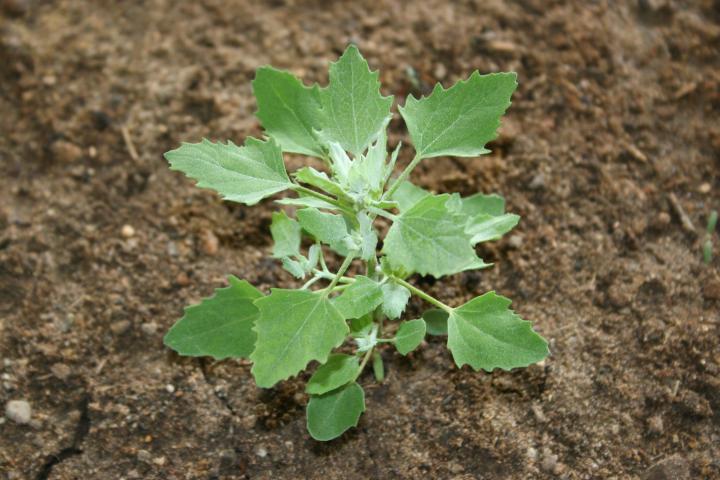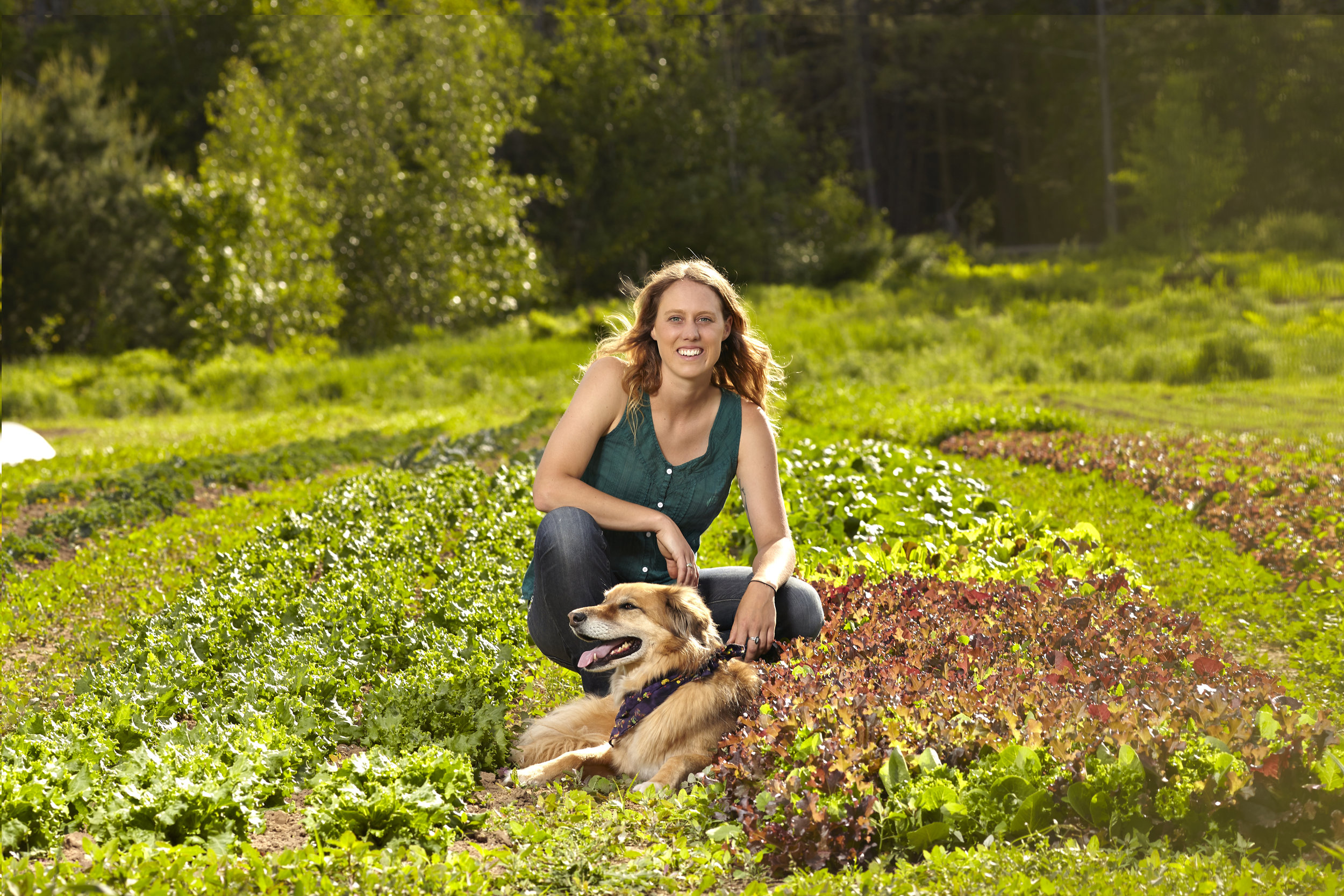Getting rid of weeds without herbicides
A weed is pretty much any plant that’s out of place or unwanted. They grow fast and bully their way into a garden. Photo from Washington State University
Every spring I skirmish with opportunistic weeds that sprout during the first warm weeks of March. The first to appear is shot weed, a tiny menacing plant that whenever even gently jostled, fires off seeds up to five feet away. It drives me crazy.
To tackle it and other unwanted seedlings, like red dock and lambs quarters, I gather volunteers and hand tools to rout them out. I’ve even trained my noble farm dog, Nimbus, to seek out blooming dandelions and chomp off the yellow flowers before their feathery seeds have a chance to spread with the wind. A garden left unweeded, even for one season, quickly becomes a jungle of chicory, dandelions, and sorrel.
“Before you go out armed with hoe in hand, you should know what you’re up against.”
A weed is pretty much any plant that’s out of place or unwanted. They grow fast and bully their way into a garden, competing with tended plants, like crisp lettuce or succulent cucumbers, for nutrients, water, and sunlight. When plants become too crowded they get stressed and are susceptible to disease and pests. And all that extra foliage can hide the damage and provide a place for bugs to bunk over the winter.
Some weeds, like thistle and pigweed, release toxic chemicals from their roots that can make some plants around them infertile, and stunt others. These effects can last for more than one season, leaving you to wonder why your broccoli never produces its prized and tasty head or your sweet potatoes simply fail to grow.
Getting rid of weeds
Nobody likes to weed. It’s easy to romanticize growing your own food until you try scrubbing the dirt out from underneath your fingernails after a long afternoon pulling little weeds from in between your radishes, only to see them sprout up again a week later. But there’s no way to avoid them, and with a few quick tips you can at least minimize how much time you spend weeding.
Nimbus finding shade amongst the pepper plants in-between weed patrol.
Know your enemy. Before you go out armed with hoe in hand, you should know what you’re up against. Some weeds are shallow-rooted annuals like chickweed and miners lettuce, while others are deep-rooted perennials like thistle and runner grass. If you’re not sure what type of plants you’re weeding, buy a local field guide for common weeds to help you identify if they are friend or foe.
Types of root systems. Photo by David McIntyre
Annual weeds: Annual weeds are easy to remove if you wait for a hot, dry day. Use a small-toothed rake, hoe or hand-weeder to cut weeds off just below the soil surface and let them bake in the sun. For weeds taller than eight inches, you’ll have to pull them out by hand.
Perennial weeds: Perennial weeds have an extensive root system, making them much harder to eradicate. Their network of roots store energy, making them more resilient than annual weeds. Weeds like thistle and dock have long taproots that grow deep underground and if you don’t get the whole root, they quickly grow back. In dry conditions it is nearly impossible to remove the entire root so I always wait for a good rainstorm to soak the earth before I attack these. The wet soil loosens the plant’s grip and lets you pull out the tap root using only a weeding fork.
Avoid disturbing the soil. Weed seeds can survive in the soil for many years. When you disturb the soil, you bring dormant seeds to the surface where they sprout. The best way to keep troublesome seeds asleep is to leave your soil alone as much as possible while weeding. I like to use a stirrup hoe to cut weed roots an inch below the surface without turning the soil.
Keep at it. Try hard as you may not to disturb the soil, you will, especially if you’re clearing a new area for planting. Honestly, the only way to truly get rid of weeds in your first year or two of planting, when your soil is full of weed seeds, is to keep at it. I like to weed new areas at least twice a week during dusk. That way I avoid the hot weather and get to enjoy a nice sunset, which distracts me somewhat from my grueling task. And here’s the pay-off: If you weed aggressively enough the first year, it’s much less likely new seeds settle into your soil and the pay-off will be a nice, clear planting bed.
One way to address the weed problem is to first rout them out, then lay a tarp over the bare ground to prevent weeds from regrowing - as Soul Food Farm in Vacaville, CA does here. The farmer concentrates compost on the soil between the rows, which in turn nourishes the lavender.
Grow your weeds first, and then get rid of them. One of the most effective ways to get rid of weed seeds in your soil is to grow them. To make this work I prepare the soil by mixing in compost and watering the ground. But instead of sowing vegetable seeds, I let the soil sit for a week. Once the bed is covered with little weed sprouts, I hit them with a hoe during the heat of the day so they shrivel and die.
Off with their heads. When you don’t have time to diligently battle the weeds in your garden, walk around with a good pair of pruners or even a weed whacker and chop off the flowers before they start producing seeds. I use this technique during the thick of summer when I have too many chores that take priority over weeding.
While cutting the flowers is much faster than pulling the roots, it’s not as effective as removing the entire weed from the soil. But it can buy you a few weeks before ever-resilient weeds start to flower once again.
Stirrup hoe. Photo by Johnny Seeds
Water only the plants you want. Create mini droughts in your garden to control your weed population. I use drip irrigation and soaker hoses to water the base of my vegetables and perennials, and avoid watering the spaces in-between my plants. By keeping the open spaces in my garden dry, I leverage the summer heat to kill weeds.
Cover your soil with mulch or cover crops. Covering your soil with mulch helps prevent weeds from sprouting. You can also plant a cover crop. Traditional cover crops, ones that add nitrogen to your soil and control weeds, are a mixture of rye, clover and vetch. But I find it hard to control these plants in a small garden setting, so I plant edible crops instead. I like to lay down fast growing lettuce between rows of peas or squash, or plant strawberries, which have fast growing runners. In the process I get more food, and fewer weeds.
Acadia Tucker is a regenerative farmer, climate activist, and author of Growing Perennial Foods: A field guide to raising resilient herbs, fruits & vegetables and Growing Good Food: A citizen’s guide to climate victory gardening and Tiny Victory Gardens: Growing food without a yard. he currently lives in Maine with her farm dog, Nimbus. When she isn't raising perennials in her own backyard, she grows hops to support locally sourced craft beer in New England.














